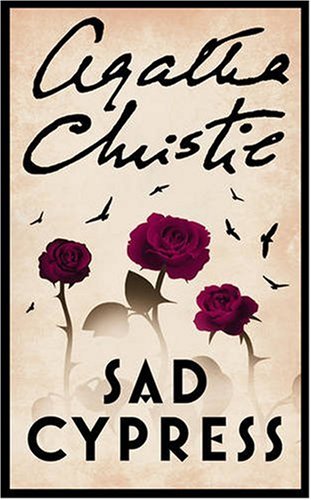First up, I think this is one of Agatha Christie’s all-time underrated greats. It’s one of my top ten favourites, partly because the premise is so simple, partly because of the way the drama is eked out slowly from the characters in the tale, and partly because Christie’s masterful knowledge of poisons is illustrated with beautiful deadliness in the dramatic courtroom finale.
The screenplay opens as the book does, with Eleanor Carlisle, an attractive young woman, standing in the dock accused of murdering her love rival, Mary Gerrard. It is swiftly established that nobody else had either the motive or the means to commit murder. So far, So Five Little Pigs, you might think. The big difference is that in this story, there are no other obvious suspects, merely witnesses, who either have no personal connections to the case, or are far removed from the scene of the crime.
Apparently the book was criticised on publication for the lack of suspects in the case. This is, however, its great strength. You want to believe that Eleanor is innocent, but you can’t imagine anyone else as the killer. She planned to murder, and the murder happened. So who else could’ve done it?
Ah, but the suspects are there, if you’re clever enough to spot the subtle implications, and therein lies the drama.
It’s a wise move to open with the murder victim revealed and Eleanor in the dock. There is one death – not unexpected, and apparently of natural causes – before Mary, a simple country girl who is going up in the world – is unequivocally poisoned. By the time the inevitable has come to pass, you are familiar with the characters, and the parts they play in the drama.
Eleanor’s fiance Roddy, who loses his heart to Mary. Aunt Laura, whose lament for a lost love haunts the whole story. The Nurses Hopkins and O’Brien, whose gossipy asides tell us what the village is thinking. Dr Lord, whose unspoken passion for Eleanor is overshadowed by her grief and loneliness. Ted Bigland, Mary’s former suitor, whom she throws over for the attentions of Roddy.
As the Poirot series is almost entirely set in the 1930s, we get hints of the looming war as Poirot ages through time, in a way he did not in the books. There are some wonderful nods to the way in which the world is changing around the ears of the privileged cast of Christie’s characters. The injected social realism adds an extra element of gravitas to proceedings. Great houses can no longer sustain many servants. Even ladies and gentlemen may need to get a job. Mary does “not quite fit” into the class of servant, making her social position more awkward. Does she belong above stairs, or below? In a rare display of pathos, the entire plot hangs on the delicate question of social position.

Roddy: Do you know, I think the national Socialists are doing quite a fair job over there. I sometimes wish we had politicians like them.
Poirot: I think, monsieur, you should be very glad that you do not.
The screenplay teases the audience so subtly, that even though I remembered the plot perfectly, I began to doubt that I’d remembered it correctly, and plumped for the wrong killer altogether.
The ending is changed for the screenplay, taking place at the scene of the crime as Poirot recreates the murder, rather than unfolding in the courtroom. It makes sense for TV, and it’s brilliantly handled. Classy, stylish, witty.
Book: 10/10
Screenplay: 10/10
Next Up: DEATH ON THE NILE


